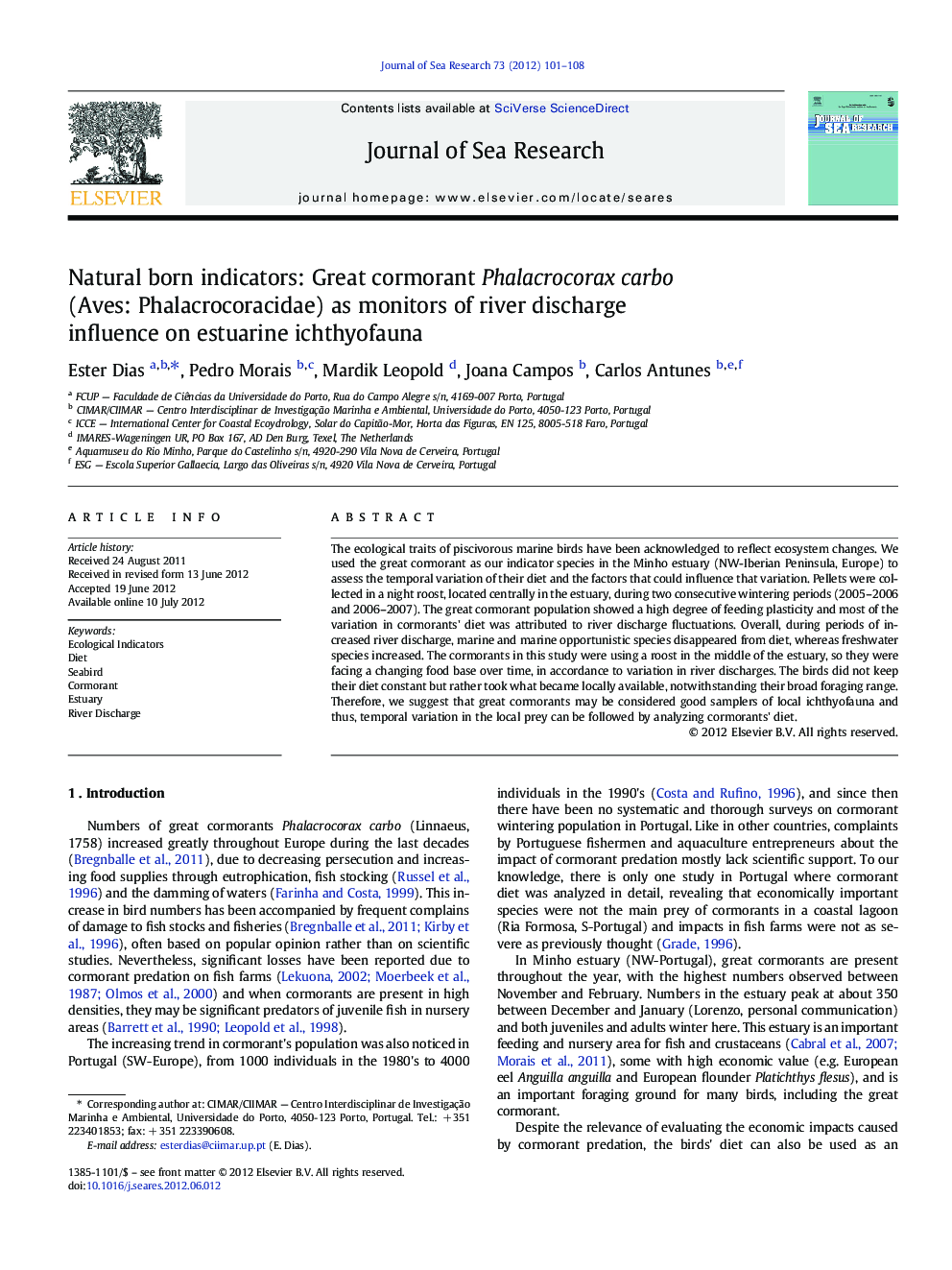| Article ID | Journal | Published Year | Pages | File Type |
|---|---|---|---|---|
| 4549915 | Journal of Sea Research | 2012 | 8 Pages |
The ecological traits of piscivorous marine birds have been acknowledged to reflect ecosystem changes. We used the great cormorant as our indicator species in the Minho estuary (NW-Iberian Peninsula, Europe) to assess the temporal variation of their diet and the factors that could influence that variation. Pellets were collected in a night roost, located centrally in the estuary, during two consecutive wintering periods (2005–2006 and 2006–2007). The great cormorant population showed a high degree of feeding plasticity and most of the variation in cormorants' diet was attributed to river discharge fluctuations. Overall, during periods of increased river discharge, marine and marine opportunistic species disappeared from diet, whereas freshwater species increased. The cormorants in this study were using a roost in the middle of the estuary, so they were facing a changing food base over time, in accordance to variation in river discharges. The birds did not keep their diet constant but rather took what became locally available, notwithstanding their broad foraging range. Therefore, we suggest that great cormorants may be considered good samplers of local ichthyofauna and thus, temporal variation in the local prey can be followed by analyzing cormorants' diet.
► Piscivorous marine birds have been acknowledged to reflect ecosystem changes. ► The temporal variation of great cormorants' diet was studied in an estuary. ► River discharge was the factor that best explained diet variation. ► Great cormorants' diet could be consider a good indicator of ecosystem changes.
